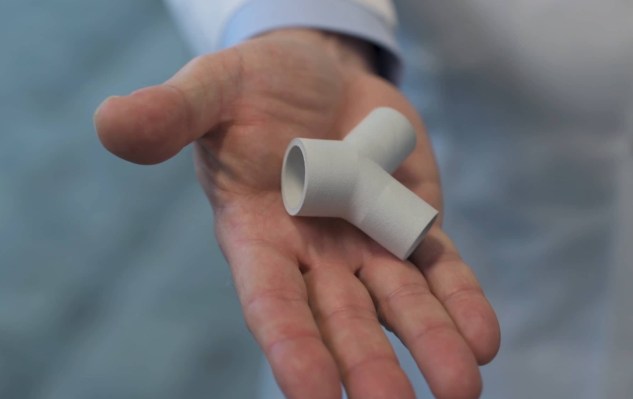

The impending shortage of ventilators for U.S. hospitals is likely already a crisis, but will become even more dire as the number of patients with COVID-19 that are suffering from severe symptoms and require hospitalization grows. That’s why a simple piece of hardware newly approved by the FDA for emergency use – and available free via source code and 3D-printing for hospitals – might be a key ingredient in helping minimize the strain on frontline response efforts.
The Prisma Health VESper is a deceptively simple-looking three-way connector that expands use of one ventilator to treat up to four patients simultaneously. The device is made for use with ventilators that comply to existing ISO standard ventilator hardware and tubing, and allows use of filtering equipment to block any possible transmission of viruses and bacteria.
VESper works in device pairs, with one attached to the intake of the ventilator, and another attached to the return. They can also be stacked to allow for treatment of up to four patients at once – provided that the patients require the same clinical treatment in terms of oxygenation, including the oxygen mix as well as the air pressure and other factors.
This was devised by Dr. Sarah Farris, an emergency room doctor, who shared the concept with her husband Ryan Farris, a software engineer who developed the initial prototype design for 3D printing. Prisma Health is making the VESper available upon request via its printing specifications, but it should be noted that the emergency use authorization under which the FDA approved its use means that this is only intended effectively as a last resort measure – for institutions where ventilators approved under established FDA rules have already been exhausted, and no other supply or alternative is available in order to preserveve the life of patients.
Devices cleared under FDA Emergency Use Authorization (EUA) like this one are fully understood to be prototypes, and the conditions of their use includes a duty to report the results of how they perform in practice. This data contributes to the ongoing investigation of their effectiveness, and to further development and refinement of their design in order to maximize their safety and efficacy.
In addition to offering the plans for in-house 3D printing, Prisma Health has sourced donations to help print units for healthcare facilities that don’t have access to their own 3D printers. The first batch of these will be funded by a donation from the Sargent Foundation of South Carolina, but Prisma Health is seeking additional donations to fund continued research as well as additional production.
This article was first featured at https://ift.tt/2QNxpiI on March 26, 2020 at 05:05PM by Darrell Etherington





More Stories
Can this possibly be true? “Metal 3D printing is now possible on any 3D printer…with the right settings and a few minor upgrades like a hardened steel nozzle…” – July 2 2023 at 04:59PM
New NASA Funding Ignites 25 3D Printing Projects in Space Exploration – June 18 2023 at 04:34PM
Nvidia AI produces 3D models from 2D videos 3D printing applications forthcoming? – June 15 2023 at 02:55AM